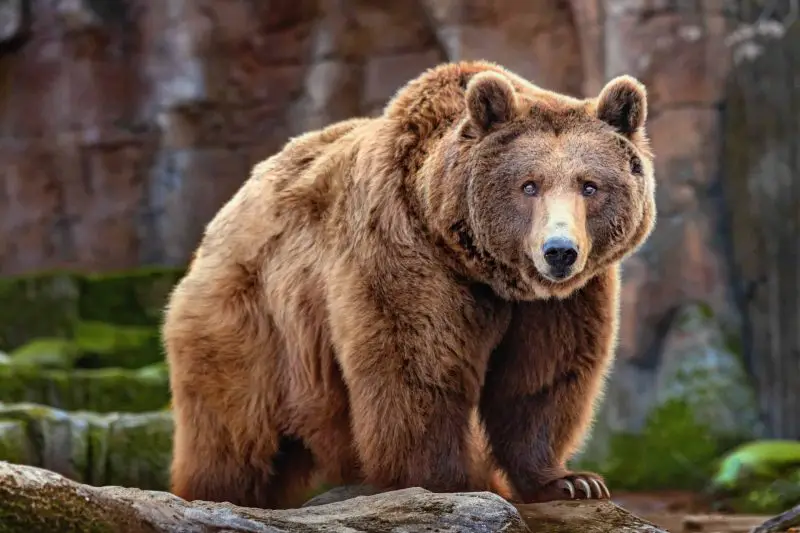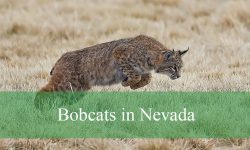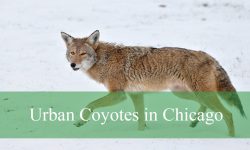In the vast wilderness of Montana—where snow-capped peaks pierce the sky and pine forests whisper with ancient secrets—roams one of North America’s most awe-inspiring creatures: the grizzly bear. Known for its immense power, intelligence, and solitary nature, the grizzly has become both a symbol of the wild and a source of fascination for those who dare to venture into its territory. Yet, there are many hidden truths about Montana’s grizzlies that few people ever talk about. From their mysterious migration habits to their surprisingly emotional behavior, these bears are far more complex than their fearsome reputation suggests.
This article uncovers the untold stories of Montana’s grizzly bears, exploring their hidden behaviors, survival instincts, and the delicate balance between humans and these majestic predators.
The Untamed Majesty of Montana’s Grizzly Bears

The Symbol of Wild Montana
Grizzly bears (Ursus arctos horribilis) are deeply woven into the identity of Montana’s wilderness. Once roaming freely across most of the western United States, these bears now primarily inhabit regions like Glacier National Park, the Northern Continental Divide, and parts of the Greater Yellowstone Ecosystem. With adult males weighing up to 800 pounds and standing over 7 feet tall when on their hind legs, the grizzly commands both respect and reverence.
But what truly sets Montana apart is not just the number of grizzlies—it’s how the landscape has allowed them to thrive. The state’s mixture of alpine meadows, dense forests, and river valleys provides ideal conditions for the bears to hunt, forage, and hibernate safely. Even as human populations grow, Montana remains one of the last true sanctuaries for these mighty animals.
A Survivor of Extinction
By the early 20th century, grizzly bears had vanished from most of the American West, victims of overhunting and habitat loss. Yet Montana’s rugged terrain offered them refuge. Thanks to strict conservation laws and decades of effort by wildlife organizations, the grizzly population in Montana has rebounded to nearly 1,800 individuals today. Still, their future remains uncertain as development pressures and climate change threaten to shrink their range.
The state’s success story is both inspiring and fragile—proof that even the most powerful predator depends on human stewardship for survival.
Hidden Behaviors and Secrets Few Know
Grizzlies Are Surprisingly Emotional
While grizzlies are often portrayed as fierce loners, researchers have discovered they possess deep emotional intelligence. Female grizzlies, for example, form intense bonds with their cubs, showing affection and even mourning when one dies. Young cubs stay with their mothers for up to three years, learning how to fish, dig, and identify safe den sites.
Even adult males—long thought to be entirely solitary—sometimes show social tolerance and engage in playful sparring, especially during summer months. Such observations reveal a side of grizzly life that contrasts sharply with their violent image.
The Hidden Diet: More Than Meat
Most people imagine grizzlies as pure carnivores, but Montana’s bears are actually omnivorous. Their diet varies dramatically with the seasons. In spring, they feast on fresh vegetation, roots, and carrion left over from winter. By summer, they shift to berries, insects, and fish. Come autumn, grizzlies enter a feeding frenzy known as hyperphagia, consuming up to 90 pounds of food a day to prepare for hibernation.
In Montana’s Glacier region, a lesser-known secret is the grizzly’s love for army cutworm moths. These nutrient-packed insects, found in alpine talus slopes, provide immense energy—nearly doubling the bear’s fat reserves before hibernation.
Communication Beyond Growls
Contrary to popular belief, grizzlies are not silent wanderers. They communicate through a combination of sounds, postures, and even scents. Cubs emit chirps and whines to signal hunger or distress, while adults use deep huffs and low rumbles to assert dominance. Their sense of smell—seven times stronger than a bloodhound’s—acts as their primary language, helping them mark territory and identify potential mates miles away.
The Secret Lives of Grizzly Mothers
Devotion and Teaching
A grizzly mother is one of the most devoted parents in the animal kingdom. She can fiercely defend her cubs against threats many times her size. But beyond her aggression lies remarkable patience and intelligence. She teaches her cubs everything they need to survive—how to locate safe feeding grounds, recognize human scents, and choose den sites.
In Montana, grizzly mothers often choose secluded alpine areas for birthing dens, far from predators and humans. These dens, carved into snow-covered hillsides, become warm sanctuaries where cubs are born during deep winter sleep.
The Hidden Struggles of Cubs
Despite their mother’s care, grizzly cubs face immense challenges. Only about half survive their first year. Predators like wolves, male bears, and even starvation pose constant threats. Still, the cubs that make it past this stage often grow into resilient adults capable of adapting to harsh environments—an embodiment of the Montana wilderness spirit.
Grizzlies and Humans: A Complex Relationship
Coexistence on the Edge
The relationship between Montanans and grizzlies is both respectful and complicated. While locals take pride in sharing their land with such iconic wildlife, human encroachment has led to increased conflicts. Bears drawn to livestock or unsecured garbage often end up relocated—or worse, euthanized.
Organizations like Montana Fish, Wildlife & Parks (FWP) have implemented education programs and bear-proof waste systems to reduce encounters. Residents in bear-prone areas are encouraged to carry bear spray, travel in groups, and store food properly while camping.
Hidden Migration Routes
One fascinating but little-known fact is that Montana’s grizzlies are reconnecting historic migration routes. Wildlife corridors now allow bears from Glacier National Park to move south toward Yellowstone—potentially restoring genetic diversity lost over centuries. This slow reconnection of isolated populations is a triumph of modern conservation science and offers hope for the species’ long-term survival.
Seasonal Secrets: How Grizzlies Survive Montana’s Extremes
The Science of Hibernation
Few natural phenomena are as fascinating as a grizzly’s hibernation. In Montana’s freezing winters, bears retreat into dens where their body temperature drops slightly, and their heart rate slows from 50 beats per minute to just 8. Despite not eating or drinking for months, they neither lose muscle mass nor suffer dehydration. Scientists still study how this biological marvel could inspire breakthroughs in human medicine—particularly in preventing muscle atrophy and kidney disease.
Spring Rebirth and Awakening
When the snow begins to melt, Montana’s grizzlies reemerge lean but strong. They instinctively head toward lower valleys, following the scent of carcasses and early spring vegetation. Mothers lead their cubs into this new world, introducing them to the rhythms of life in the wild.
Every footprint they leave in the mud tells a story of endurance, wisdom, and instinct—a legacy that has survived since the Ice Age.
Conservation: What the Future Holds
Modern Threats to an Ancient Predator
Despite Montana’s success in preserving grizzlies, challenges continue to grow. Climate change affects food availability, particularly the berry and insect populations that sustain bears. Expanding urban development further fragments their habitats. Even recreational tourism, while beneficial economically, can disturb bear territories.
The greatest secret few acknowledge is that the grizzly’s biggest threat isn’t poaching—it’s isolation. When populations become genetically isolated, their long-term viability declines. Conservationists are racing to establish ecological corridors to ensure bears remain connected across their range.
Community-Driven Conservation
Many Montanans have taken conservation into their own hands. Local ranchers now use non-lethal deterrents, like electric fencing and guard dogs, to protect livestock. Outdoor enthusiasts participate in “Bear Aware” programs to learn coexistence practices. Such grassroots efforts have become vital in keeping both humans and bears safe.
Montana’s approach to living with grizzlies serves as a model for other regions struggling to balance wildlife preservation with human needs.
Myths and Misconceptions About Grizzly Bears
Myth 1: Grizzlies Are Man-Eaters
While grizzly attacks do occur, they are exceedingly rare and usually the result of surprise encounters or food competition. Bears prefer to avoid humans whenever possible.
Myth 2: All Grizzlies Hibernate the Same Way
Not all grizzlies hibernate equally. Pregnant females typically enter dens earlier and emerge later than males. Some young males skip hibernation altogether in milder winters if food remains available.
Myth 3: They Can’t Climb Trees
Though heavy, young grizzlies can climb trees effectively, especially when escaping threats. Adults, however, rely more on their strength and speed to intimidate predators.
Ecological Importance: The Unsung Role of Grizzlies
Grizzly bears are keystone species, meaning their presence shapes entire ecosystems. As they forage, they distribute seeds through their scat, promoting forest regeneration. Their digging behavior aerates soil and exposes nutrients for new plant growth. Even the remains of their kills provide food for scavengers like eagles, foxes, and beetles.
In Montana’s intricate web of life, the grizzly is both a predator and a gardener—maintaining the balance between destruction and renewal.
Hidden Facts About Montana’s Grizzlies
Fact 1: Grizzlies Remember Human Faces
Studies show that grizzlies have exceptional memories. They can remember human faces and specific locations for years, helping them avoid dangerous areas.
Fact 2: They Have a “Language” of Trees
Grizzlies often rub their backs against trees, leaving behind fur and scent markings. These “communication trees” serve as bulletin boards, allowing bears to identify one another’s presence and even reproductive status.
Fact 3: They Influence River Ecosystems
By dragging salmon and carcasses into forests, grizzlies transport marine nutrients inland. This process enriches soil fertility, benefiting plants far from the water’s edge.
Fact 4: Montana’s Grizzlies Are Expanding North
Recent tracking data shows that Montana’s grizzly population is slowly moving north into Canada, suggesting a promising increase in both range and genetic diversity.
Conclusion
Montana’s grizzly bears are far more than wilderness icons—they are living testaments to resilience, intelligence, and ecological balance. Their hidden behaviors, emotional depth, and vital role in nature reveal a creature as complex as the mountains it inhabits. As we continue to share this land with them, understanding and respect are our greatest tools for coexistence.
These secrets, once overlooked, remind us that protecting the grizzly is not just about saving a species—it’s about preserving the wild soul of Montana itself.
FAQs About Grizzly Bears in Montana
Where are grizzly bears most commonly found in Montana?
Grizzlies are mainly found in northwestern Montana, especially in Glacier National Park, the Bob Marshall Wilderness, and areas surrounding the Northern Continental Divide.
What should you do if you encounter a grizzly bear in the wild?
Stay calm, avoid direct eye contact, and slowly back away. Do not run. If the bear approaches, speak in a calm voice and use bear spray if necessary.
Are grizzly bears still endangered in Montana?
They are listed as “threatened” under the Endangered Species Act. While populations have rebounded, habitat fragmentation and human conflicts remain concerns.
How long do grizzly bears live in the wild?
Grizzlies can live up to 25 years in the wild, though many die earlier due to natural causes or human-related factors.
What is the best time to see grizzly bears in Montana?
Spring through early fall is ideal, particularly in Glacier National Park, when bears are active and foraging after hibernation.






